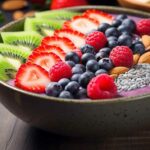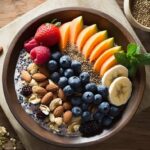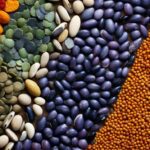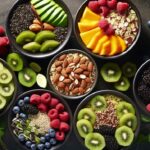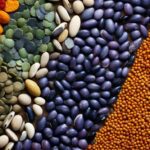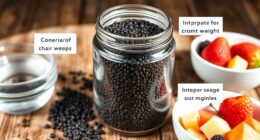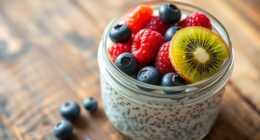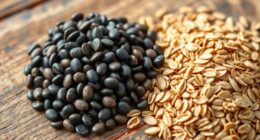Get ready for a gluten-free meal that will leave you wanting more! We offer a variety of delicious and nutritious recipes that go beyond just dessert.
From energizing smoothies to satisfying porridge and snack-worthy energy balls, chia seeds are about to become your new best friend.
So, grab a spoon and join us on this culinary adventure as we explore the endless possibilities of chia seeds. Trust us, you won’t be disappointed!
Key Takeaways
- Chia seeds can be used as a substitute for gluten-containing grains in baking and can add texture and moisture to gluten-free bread and muffins.
- Chia seeds are high in fiber and can help with weight loss by reducing appetite, promoting digestion, and supporting metabolism and fat burning.
- Chia seeds provide sustained energy release during physical activity, support muscle function and repair, and can lower cholesterol levels and reduce the risk of heart disease.
- Chia seeds can be incorporated into a variety of recipes, including chia seed pudding with fresh fruits, chia seed porridge for breakfast, chia seed energy balls for snacking, and chia seed smoothies, to add nutrition, flavor, and texture.
Health Benefits of Chia Seeds
Chia seeds offer a multitude of health benefits for us. These tiny seeds are packed with nutrients and can be a valuable addition to any diet. One of the main reasons why chia seeds are so beneficial is their high nutritional value. They’re an excellent source of omega-3 fatty acids, fiber, protein, and antioxidants. These nutrients can help support heart health, improve digestion, and boost overall immunity.

Additionally, chia seeds have been associated with weight loss benefits. Due to their high fiber content, they can help promote feelings of fullness and reduce cravings, leading to reduced calorie intake. They also help regulate blood sugar levels, which can prevent spikes and crashes in energy levels.
Incorporating chia seeds into your daily meals can be a simple yet effective step towards better health.
Chia Seed Pudding With Fresh Fruits
After exploring the health benefits of chia seeds, let’s dive into a delicious gluten-free treat that combines the goodness of chia with the freshness of fruits: chia seed pudding with fresh fruits. This delightful dessert isn’t only visually appealing but also packed with nutrients that will satisfy your sweet tooth while nourishing your body.
To make a chia seed pudding with fresh fruits, start by preparing a chia seed parfait. Simply mix chia seeds with your choice of milk, such as almond or coconut milk, and a sweetener like honey or maple syrup. Stir well and let it sit in the refrigerator overnight to allow the chia seeds to soak up the liquid and form a thick, creamy pudding.
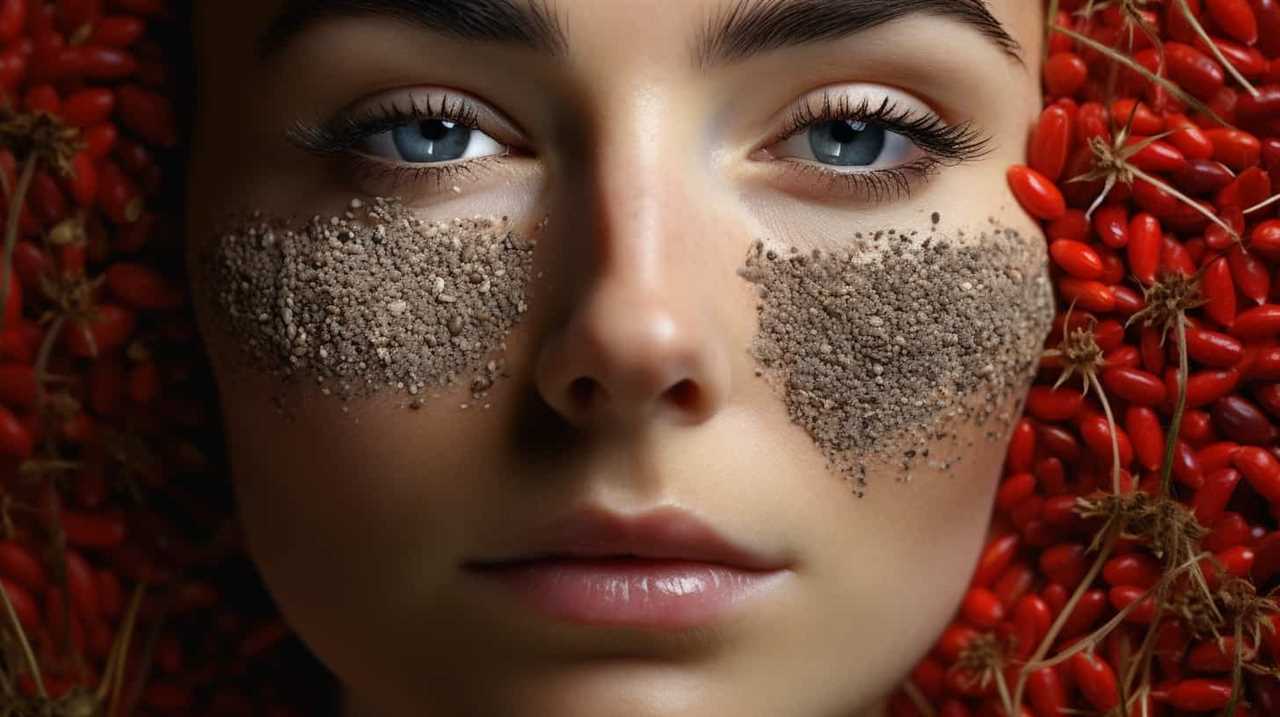
In the morning, when the chia seed overnight oats have set, it’s time to add the finishing touch – fresh fruits! Choose vibrant fruits like berries, sliced bananas, or juicy mangoes to bring a burst of color and flavor to your chia seed pudding. Gently layer the fruits on top of the pudding, creating an enticing visual presentation.
With each spoonful, you’ll experience the delightful combination of creamy chia seed pudding and the juicy, refreshing taste of fresh fruits. Not only is this treat a delightful way to start your day, but it also provides a nutritious boost to support your overall well-being.
Enjoy this gluten-free extravaganza and let it nourish your body and soul!
Chia Seed Porridge for Breakfast
Let’s continue exploring the versatile uses of chia seeds in our breakfast routine with a delicious and nutritious chia seed porridge. Chia seed porridge is a wonderful option for those looking to switch up their morning meal. It offers a hearty and satisfying start to the day, packed with fiber, protein, and omega-3 fatty acids.
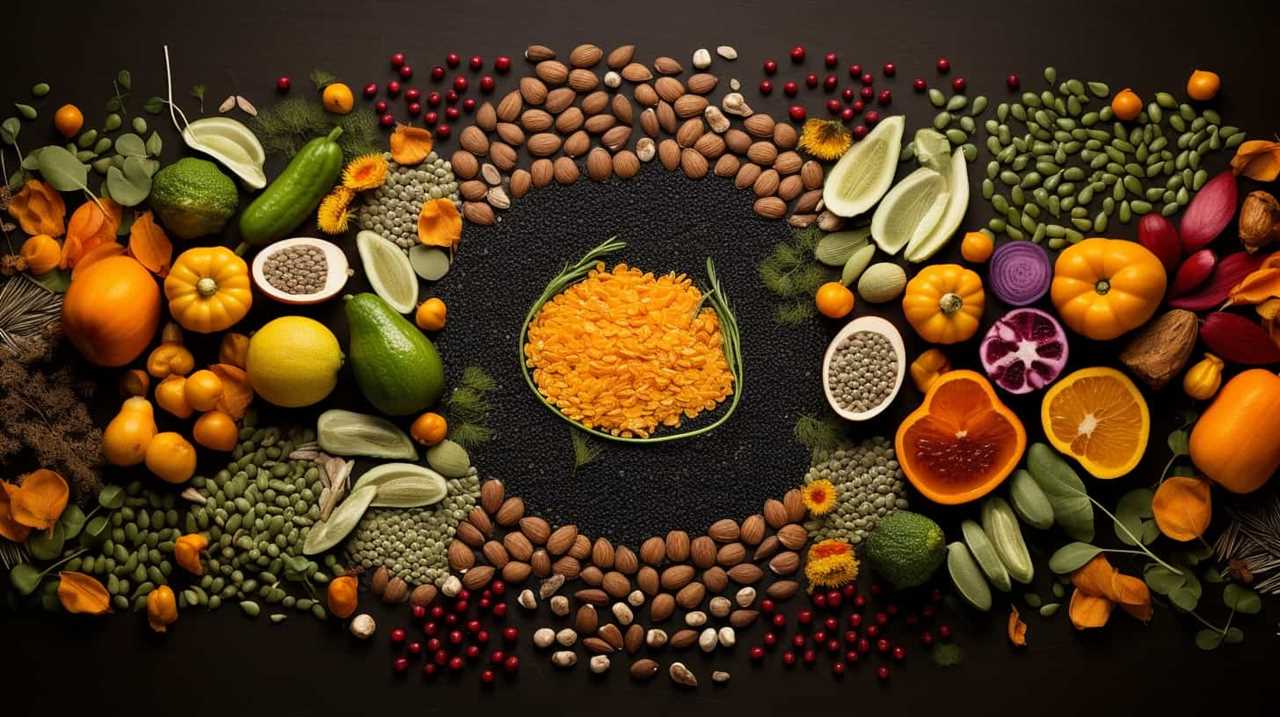
One popular variation is chia seed overnight oats, where the chia seeds are mixed with oats, milk, and your choice of toppings such as berries or nuts. Another option is chia seed pancakes, where the seeds are blended into the batter for an added nutritional boost. These pancakes are fluffy, flavorful, and perfect for a leisurely weekend breakfast.
Now, let’s move on to another delightful way to enjoy chia seeds – chia seed energy balls for snacking.
Chia Seed Energy Balls for Snacking
For our snacking pleasure, we can create a variety of chia seed energy balls. These little bites are packed with nutrients and are perfect for a quick pick-me-up during the day. Chia seeds are a great source of protein, fiber, and healthy fats, making them an excellent addition to any energy ball recipe.
To make chia seed energy balls, start by combining chia seeds with your favorite nuts, dried fruits, and sweeteners. You can also add some cocoa powder or nut butter for extra flavor. Once all the ingredients are mixed together, roll the mixture into small balls and refrigerate for a few hours to set.

These chia seed energy balls aren’t only delicious but also incredibly versatile. You can experiment with different flavors and textures by adding ingredients like coconut flakes, cinnamon, or even chocolate chips. They’re also a great alternative to store-bought protein bars, as you can control the ingredients and customize them to your liking.
Chia Seed Smoothie Recipes
We love incorporating chia seeds into our smoothie recipes for an extra boost of nutrition and texture. Chia seeds aren’t only a great source of fiber and omega-3 fatty acids, but they also add a delightful crunch to our smoothies.
Here are three of our favorite chia seed smoothie recipes:
- Berry Blast Smoothie: Blend together a handful of mixed berries, a banana, a tablespoon of chia seeds, and a cup of almond milk. This smoothie is refreshing and packed with antioxidants.
- Tropical Paradise Smoothie: Combine a frozen banana, a cup of pineapple chunks, a tablespoon of chia seeds, and coconut milk in a blender. This creamy and tropical smoothie will transport you to a sunny beach.
- Green Goddess Smoothie: Blend together a handful of spinach, a frozen banana, a tablespoon of chia seeds, and almond milk. This smoothie isn’t only nutritious but also helps to detoxify and energize your body.
Frequently Asked Questions
Can Chia Seeds Help With Weight Loss?
Yes, chia seeds can help with weight loss. They are high in fiber and can help you feel fuller for longer. Plus, they can be easily incorporated into a vegan diet and can aid in diabetes management.
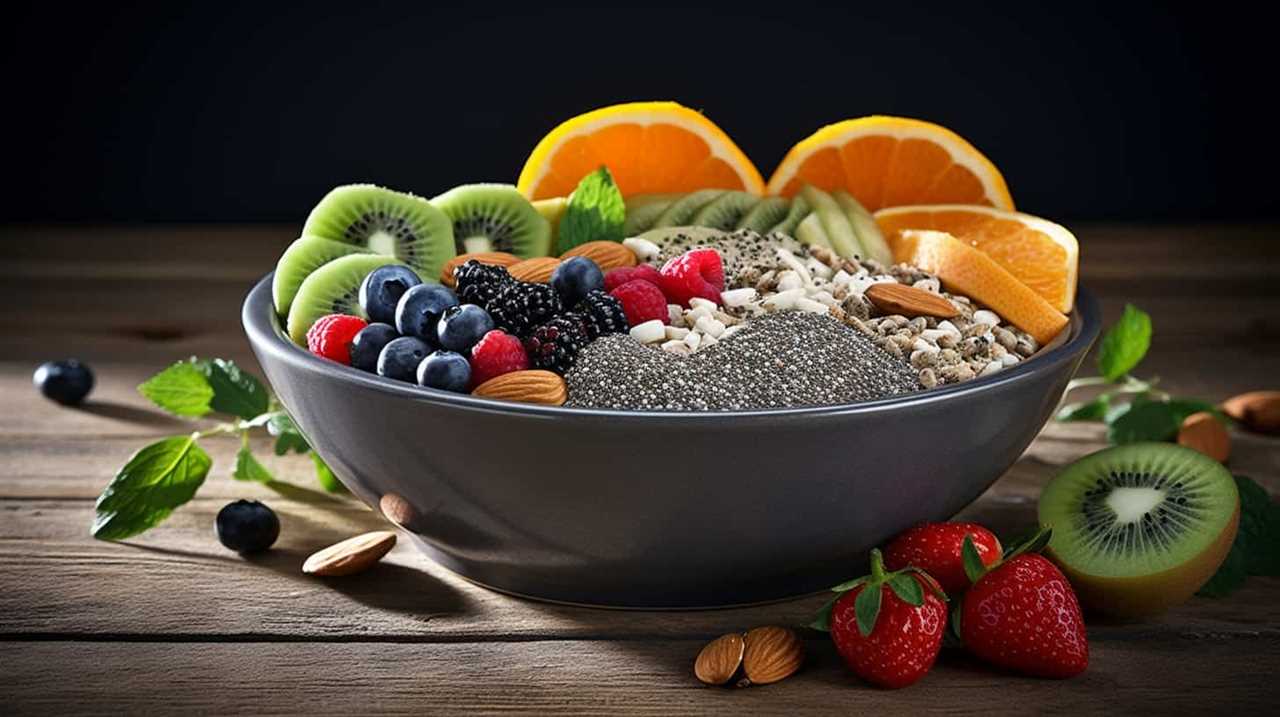
How Do Chia Seeds Benefit Digestion?
Chia seeds benefit digestion by promoting gut health and aiding in nutrient absorption. They contain fiber that supports regular bowel movements and helps maintain a healthy gut flora, leading to improved digestion and overall well-being.
Are There Any Potential Side Effects of Consuming Chia Seeds?
There may be potential allergies associated with consuming chia seeds, and they can also have a blood thinning effect. It’s important to be aware of these possible side effects when incorporating chia seeds into our diet.
Can Chia Seeds Be Used as an Egg Substitute in Baking?
Chia seeds can be a great egg substitute in baking. They add moisture and help bind ingredients together. Plus, they’re packed with nutrients! Check out our chia seed pudding recipes for more delicious ways to use them.
How Do Chia Seeds Contribute to Heart Health?
Chia seeds contribute to heart health by providing heart-healthy benefits. They are rich in omega-3 fatty acids, which can help reduce inflammation and lower the risk of heart disease. Incorporating chia seeds into your diet can support cardiovascular health.
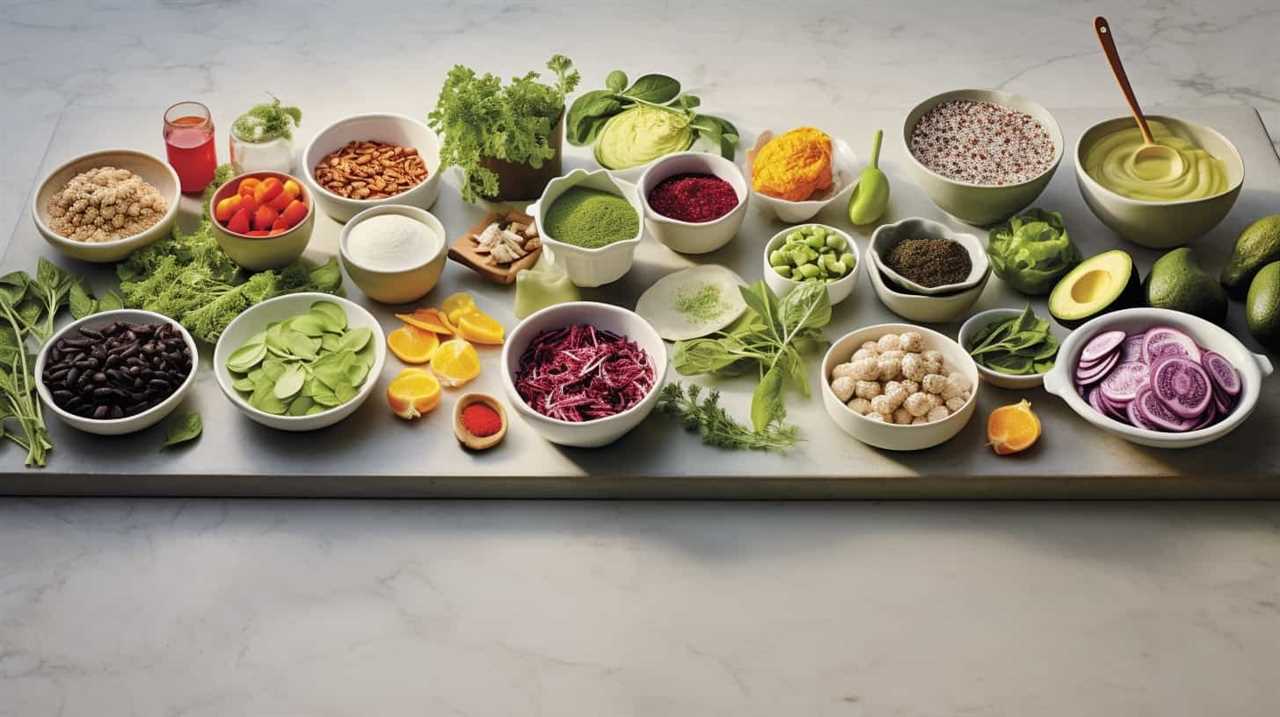
Conclusion
Indulge in the gluten-free goodness of chia seeds with these mouthwatering recipes.
From the creamy chia seed pudding topped with luscious fruits to the hearty chia seed porridge, your mornings will never be the same.
For a quick and energizing snack, try the delectable chia seed energy balls.
And for a refreshing treat, whip up one of the tantalizing chia seed smoothie recipes.

Let the chia extravaganza begin, where health meets taste in a harmonious blend!


